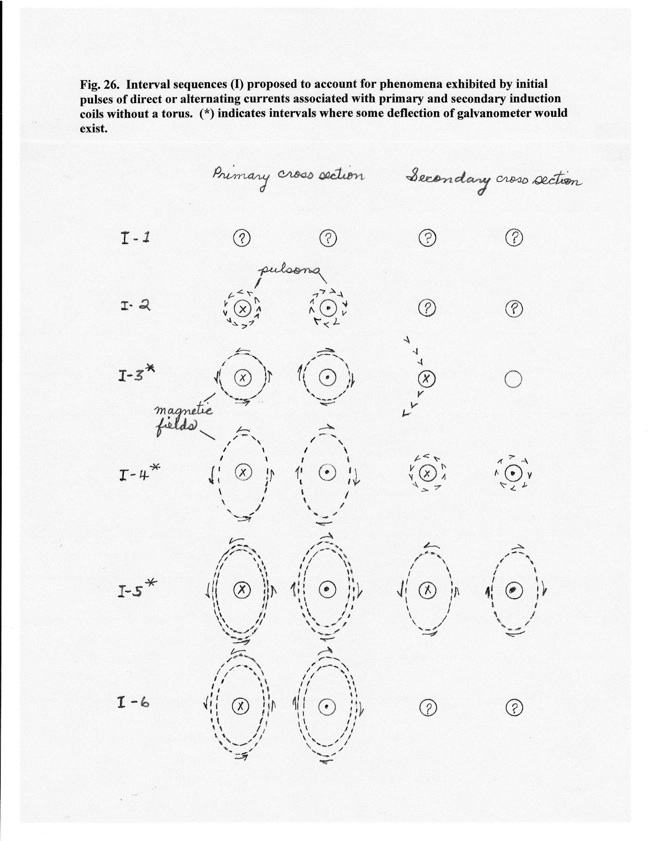

















I-1. Random electron drift - no current exists. Electrons in coils are in a state of random drift (?) as noted in Fig. 22 B at t = 1.
I-2. Current initiation and creation of primary pulson signals. Pulson signals (>>>) are emitted from electrons of primary coil associated with tandem stack formations at current initiation creating conditions represented in Fig. 22 B at t = 2.
I-3*. Induction of counter current. Pulson emissions from the primary coil induce a counter current in the secondary coil via mechanism of Fig. 22 C. Movement of galvanometer in secondary as for Faraday’s experiment (Fig. 21 A) is initiated. Magnetic fields (-----) start to form in the primary.
I-4*. Secondary pulson emissions. The process of I-2 is repeated for the secondary coil. (Current initiation and pulson emissions of I-3 occur together but are divided into separate intervals here for illustration.) Criton swirls of the primary coil have initiated the stabilization of its magnetic field as presented in Fig. 23 B-1.
I-5*. Establishment of steady magnetic fields. Pulson signals have ceased in the primary and secondary circuits. Magnetic fields for primary and secondary coils become established as illustrated for Fig. 23 B-1.
I-6. Decay of current in secondary coil. The current in the primary circuit has assumed a steady state and established a magnetic field as indicated in Fig. 23 B-1. Electron drift in secondary circuit has returned to status indicated for Fig. 22 B at t = 1 and its magnetic field has dissipated. Galvanometer in secondary circuit returns to zero.